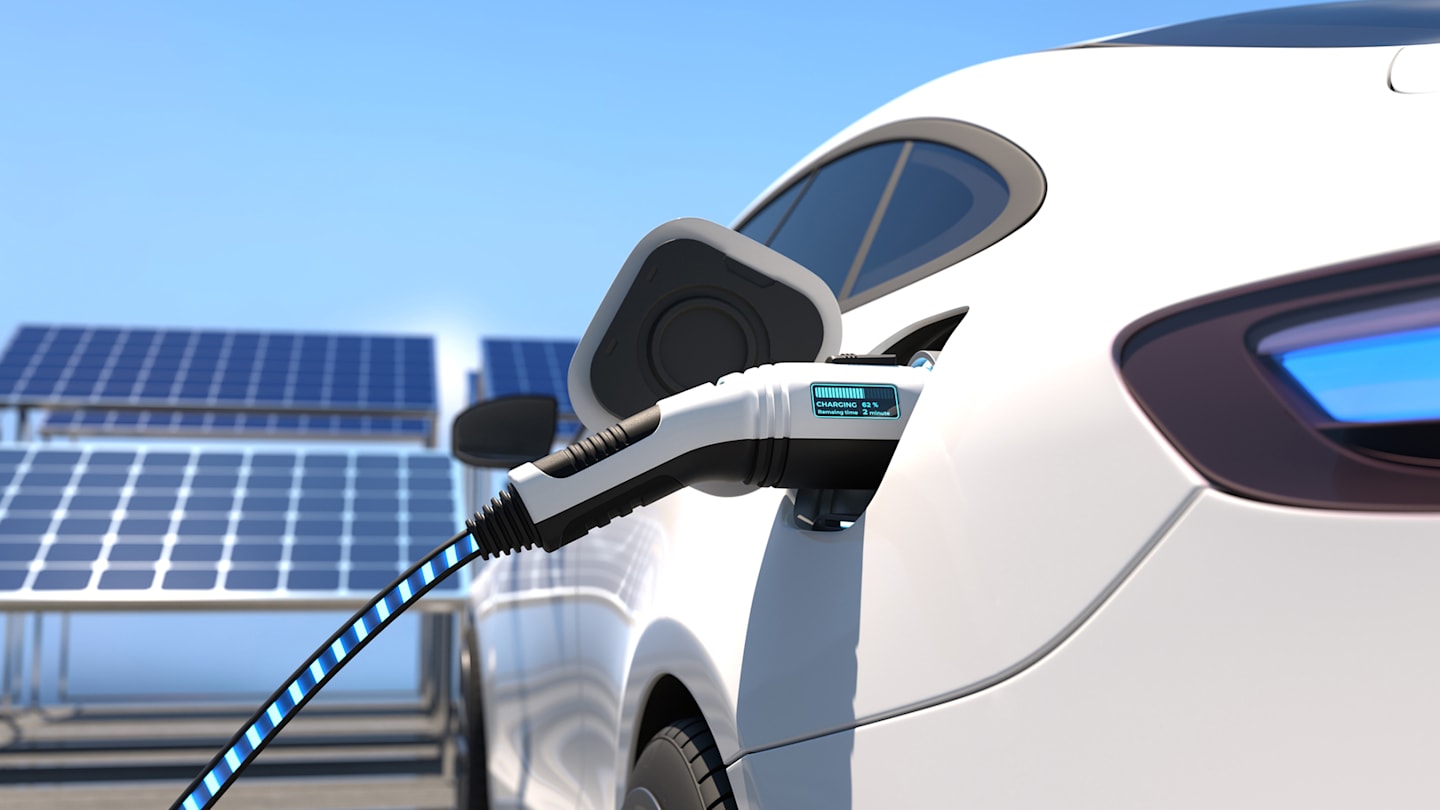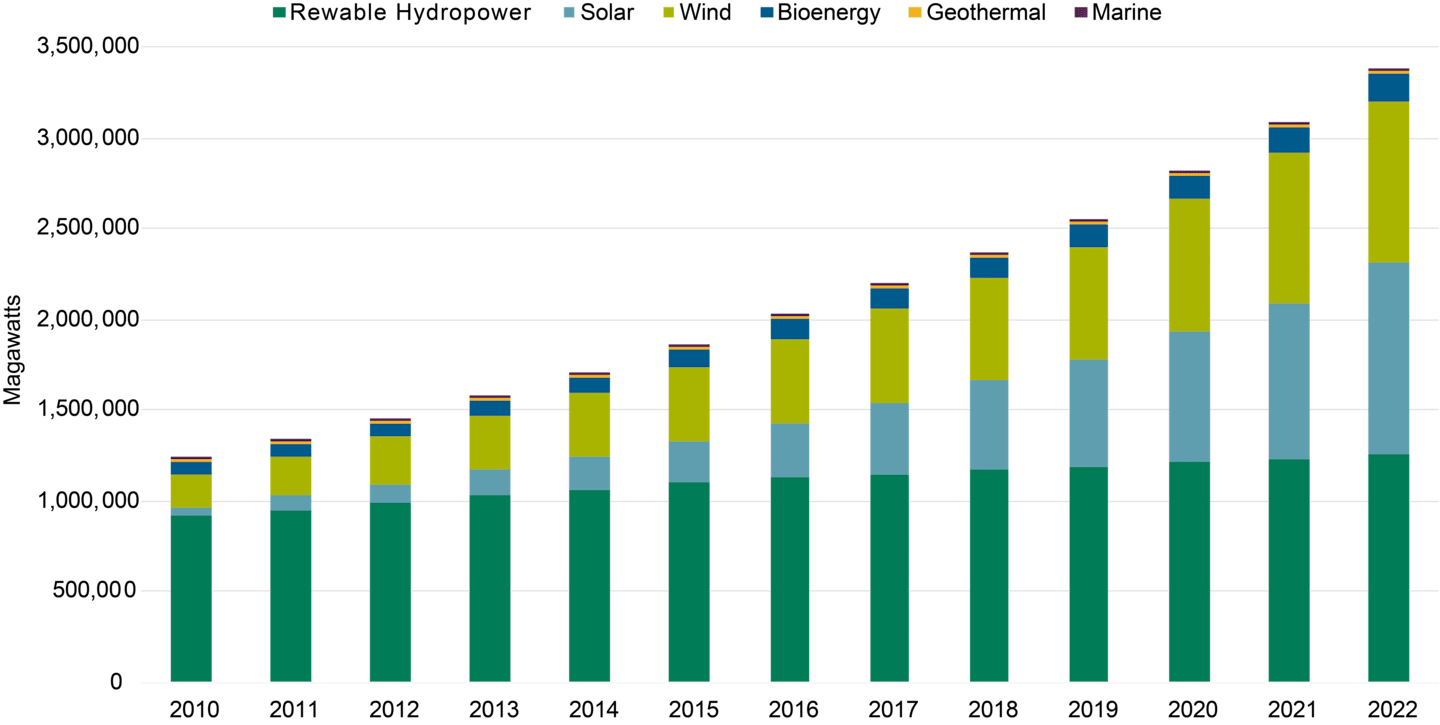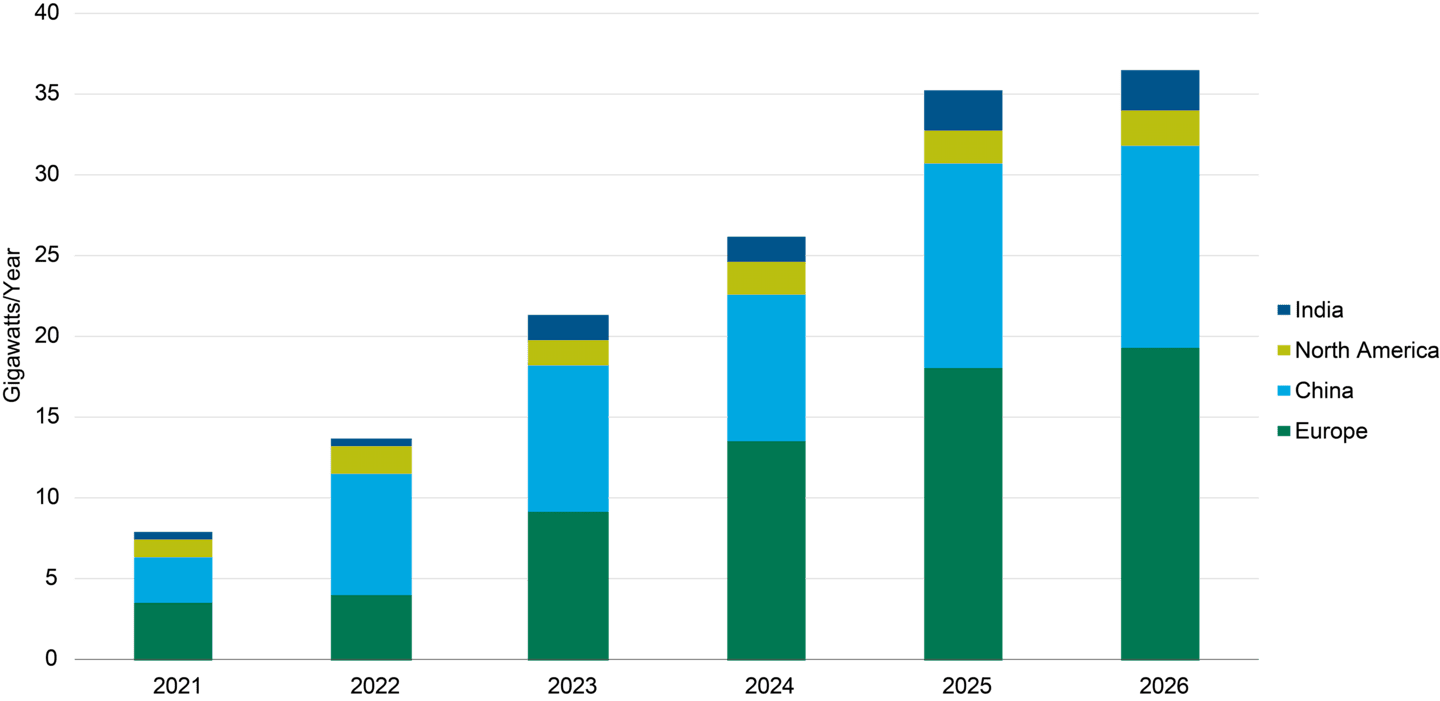Emerging Trends and New Technology Support the Energy Transition

Key Takeaways
Energy transition investment opportunities extend beyond energy providers to supply chains across sectors and industries.
Financial incentives in the Inflation Reduction Act of 2022 should increase the adoption of cleaner energy sources, including green hydrogen.
China’s post-COVID economic recovery should boost long-term spending on clean energy.
Alternative and renewable energy sources, such as wind, solar, hydroelectric, geothermal and biodiesel, are capturing headlines. Indeed, investment in the energy transition has gained steadily over the last decade, as shown in Figure 1.
Figure 1 | Global Investment in Renewable Energy Sources Has Risen Steadily Global Renewable Electricity Capacity by Primary Technology

Data from 2010 – 2022. Capacity data is available annually. Last update 3/25/2023. Source: International Renewable Energy Agency.
Don’t Overlook the Investment Potential of Energy Transition Supply Chains
We have identified many companies offering alternative and renewable energy sources. A deeper dive reveals significant investment potential in the supply chains that support these industries.
EV Supply Chain Is Broad
Anyone who doubts the growing consumer acceptance of the shift to electric vehicles (EVs) should consider the popularity of Ford’s all-electric F-150 Lightning pickup and Mach-E Mustang. Despite sticker prices for the most luxurious models approaching $100,000, wait times currently stand at about 7.5 months and three to four years, respectively, according to the auto industry website Edmunds.com.
EVs also encompass trains, buses, bikes, trucks and commercial fleets, dampening the demand for fossil fuel-based energy sources.
What’s not so obvious is the variety of sectors and industries that comprise the EV supply chain:
Makers of sensors, cameras and lenses that enable autonomous or assisted driving and the chips that support them.
Companies working to extend EV battery life while simultaneously lowering battery costs (a significant contributor to EV prices).
Firms building and supplying parts and technology to meet the growing need for charging station infrastructure.
Metals and mining firms that supply and process the materials needed to build and power EVs. These metals include lithium, cobalt, nickel and copper.
The extraction and processing of these inputs come with sustainability risks. We are monitoring this situation carefully and note that newer technology helps mitigate some risks by providing alternative material choices for EV battery manufacturing.
Automation and Green Architecture Supply Chains Offer Additional Opportunities
The EV supply chain isn’t the only supply chain to consider. Factory automation is another. Companies supplying testing and measurement equipment enable the construction of more energy-efficient buildings and the operation of cleaner factories and plants. France-based Schneider Electric, in the energy sector, is one such example.
Firms offering gray water recycling, solar and geothermal power systems and energy-efficient smart windows and floors support green architecture.
Wind power is a popular and well-reported alternative, renewable energy source. It is supported by various companies that design, build and supply components and automation equipment for offshore wind farm operators, such as Spain-based Iberdrola. Others provide the hardware and software that enable connection to the onshore grid.
Similarly, solar panels depend on an extensive supply chain before the technology can be deployed in residential and commercial buildings or a solar energy farm can be “planted.” Polysilicon, cadmium telluride, photovoltaic film, semiconductors, sensors and mounting infrastructure are among the elements in this supply chain, helping to make this technology more viable.
IRA and Similar Legislation Are Game Changers for Clean Energy
We think the impacts of the Inflation Reduction Act (IRA) on energy transition are game-changing. Comparable European legislation directs more than 200 billion euros toward accelerating energy transition plans.
The IRA earmarks approximately $370 billion in federal funding to encourage investment in clean energy technology and initiatives through tax credits and other financial incentives. In our view, green hydrogen will benefit the most.
Green Hydrogen: The Alternatives’ Alternative
Hydrogen is already used in manufacturing, refineries, chemical plants and fertilizer production. Removing pollutants from this “brown” and “blue” hydrogen (derived from coal and natural gas, respectively) would be prohibitively expensive and consume enormous amounts of fossil fuel-based sources.
On the other hand, renewable, or “green” hydrogen, uses alternative energy sources in a cleaner, more efficient method of extracting hydrogen from water through electrolysis technology. Green hydrogen is a zero-emission alternative to other energy sources.
While its costs aren’t negligible, lower renewable energy prices and declining costs of the electrolyzers used in the extraction process are making green hydrogen a more viable option. The World Bank estimates that like-for-like costs for green hydrogen and fossil fuel-based choices could reach parity by 2025.
We believe the environmental advantages and increasing popularity of green hydrogen will drive a long-term secular spending trend.
Don’t Underestimate China’s Role in the Energy Transition
In many ways, China’s progress toward energy transition is a model for the rest of the world. Its renewable capacity overtook coal capacity in 2022.
China boasts over 400 million middle-class consumers and almost half a billion drivers. It has nearly 80% of the world’s fast-charging EV stations and 60% of normal-speed EV charging stations, according to the International Energy Agency (IEA). Its progress toward energy transition will profoundly affect how quickly we move toward a net-zero environment.
China is currently the world’s largest producer of solar energy and the top exporter of solar energy equipment. Keeping with this renewables theme, it’s also the No. 1 producer of green hydrogen.
The nation produces about 33 million tons of green hydrogen annually, ahead of Saudi Arabia. Moreover, according to the IEA, China has pledged to bring 50,000 hydrogen fuel-cell vehicles online by 2025 as it accelerates the decarbonization of its economy.
It plans to increase annual green hydrogen production to 100,000 and 200,000 tons by 2050 as part of its first-ever hydrogen industry transition plan.
Europe, North America and India are also ramping up electrolyzer manufacturing capacity. See Figure 2.
Figure 2 | China Accelerates Its Green Hydrogen Commitment Planned Electrolyzer Manufacturing Capacity by Region

Data from 2021 – 2026. Source: IEA. License: CC by 4.0.
China’s commitment to increasing its supply and utilization of green hydrogen should help drive demand for this technology and support the companies affected by its wider adoption.
This development supports our view that the energy transition will drive long-term secular spending as economies move to cleaner energy sources.
Authors
Sr. Client Portfolio Manager
Senior Client Portfolio Manager
Senior Client Portfolio Manager
Explore Our Global Growth Capabilities
The opinions expressed are those of American Century Investments (or the portfolio manager) and are no guarantee of the future performance of any American Century Investments' portfolio. This material has been prepared for educational purposes only. It is not intended to provide, and should not be relied upon for, investment, accounting, legal or tax advice.
This material has been prepared for educational purposes only. It is not intended to provide, and should not be relied upon for, investment, accounting, legal or tax advice.
No offer of any security is made hereby. This material is provided for informational purposes only and does not constitute a recommendation of any investment strategy or product described herein. This material is directed to professional/institutional clients only and should not be relied upon by retail investors or the public. The content of this document has not been reviewed by any regulatory authority.
References to specific securities are for illustrative purposes only and are not intended as recommendations to purchase or sell securities. Opinions and estimates offered constitute our judgment and, along with other portfolio data, are subject to change without notice.